TYPES
OF SPINAL CURVE DISORDERS & SYMPTOMS!
There are mainly three types of Spinal curve disorders.
In this article, we discuss the types of spinal curvature disorders in
brief.
What are the types of Spinal Curve Disorders or spinal
abnormalities?
(A)Scoliosis:
Scoliosis the spine gets turned into the shape of S or C. It is often seen
occurring during the growth spurt just before puberty.
Though it can be caused by conditions such as cerebral palsy and
muscular dystrophy etc. the causes of scoliosis are unknown till now. About 3%
of adolescents experience scoliosis.
The symptoms of it are mild but can become severe as
children grow. The spine may also rotate or twist, in addition to curving side
to side causing the worsening situation to occur.
It is very dangerous when it turns severe as it reduces the amount
of space within the chest, further making it difficult for the lungs to function
properly.
It can be detected with X-rays even
if could be mild Scoliosis.
What are the symptoms Experienced?
Following are the symptoms of
Scoliosis:
- Uneven shoulders
- One hip higher than the other
- One shoulder blade that appears more prominent
than the other - Uneven waist
What are the Causes of
it?
dystrophy)
2. Birth defects
3. Injuries to or infections of the spine
What are the risk factors included in Scoliosis?
Age:
Age is one of the risk factors that affect scoliosis.
Symptoms of it typically begin during the growth spurt which occurs just prior
to puberty.
Sex:
Generally, girls are prone to have a higher risk of curve
worsening and requiring treatment. But the rate of scoliosis is almost the same
in boys as well as girls.
Genes:
Hereditary factors may be the cause of Scoliosis and that’s
the reason why it is one of the risk factors for developing scoliosis.
Scoliosis can run in families, but most children with scoliosis don’t have a
family history of the disease.
What are the other complications associated with
it?
Sometimes it may cause complications
that include:
Back problems:
Scoliosis from childhood may experience severe back pain than
normal people without scoliosis.
Appearance:
hips and shoulders, prominent ribs, and a shift of the waist and trunk to the
side.
Heart and Lung Diseases:
rib cage gets pressed against the lungs and heart. It makes it more difficult
to breathe and harder for the heart to pump in the condition of
scoliosis.
When to refer a doctor?
You should refer a doctor if you get
to see the symptoms and signs of Scoliosis in your child.
What is
the Treatment?
Scoliosis Braces:
Doctors recommend braces if your child’s bones are still growing.
It doesn’t mean that wearing braces may cure your scoliosis but it helps to
prevent further growth of it.
Braces can be discontinued:
- About two years after girls begin to menstruate
- When boys need to shave daily
- When there are no further changes in height.
Surgery:
Scoliosis surgery is the way to stop the progress of severe
scoliosis. The most common type of scoliosis surgery is called spinal fusion.
In it, surgeons connect two or more of the bones in the spine together, so they
can’t move independently.
It might include complications such as bleeding,
infection, pain, or nerve damage.
(B)Kyphosis:
Kyphosis is a condition in which your back rounds forward
and becomes exaggerated. It is seen usually in older people, most commonly in
older women.
It occurs due to the weakening of spinal bones. It further
causes them to crack or compress.
There is also another kind of
kyphosis which is seen in infants or teens. The cause of it is due to the
malformation of the spine.
What are its Symptoms?
You may experience less or mild symptoms or even no noticeable
symptoms in mild kyphosis.
Some might feel severe back pain and stiffness in their
back.
What are the causes of Kyphosis?
When the vertebrae in the upper back become more wedge-shaped, it
is termed as Kyphosis.
What are its causes?
Causes include:
Osteoporosis:
Osteoporosis can be one of the causes of spinal curve disorders.
It is most commonly seen in older women. Also, people who have corticosteroids
for a long term period are found to have kyphosis.
Fractures:
Breaking or crushing of vertebrae can be included under the cause
of kyphosis.
Disk degeneration:
There are different discs located in our body that act as
cushions between spinal vertebrae. Depending on the age these disks dry out and
shrink which worsens the condition of kyphosis.
It may include other causes such as:
- Scheuermann’s disease
- Birth defects
- Cancer and treatment of cancers
- Syndromes
How to treat?
You may refer to the treatment such as:
1. Yoga
2. Weight Loss
3. Medications
4. Surgery
5. Braces
What are the lists of Complications in it?
You might experience breathing problems which can build pressure
on your lungs.
There might be difficulty in performing tasks, thus you are
limited to perform physical functions.
It can lead to various digestive problems causing your digestive
tract to compress.
It makes your body image appears to be poor in adolescents.
When to see a doctor?
You should see a doctor immediately if you notice an increased
curve in your upper back.
(C)Lordosis:
When your spinal curvature bends inwards, that condition is referred
to as lordosis. It is also termed as swayback in other words. It might affect
your lower back as well as your lower neck. Also, in severe conditions, it
might affect your movement. This is the normal type of spinal curve disorder.
Causes of Lordosis
Here we look after the causes of
Lordosis:
Spondylolisthesis:
It refers to the condition of Spinal Curvature where one of the
lower vertebras slips forward onto the bone below.
Osteoporosis:
It is a kind of bone disease where the loss of bone density
occurs. It further increases the risk of fractures.
Obesity:
It might become one of the causes of Lordosis in you. It
also can be the cause of other serious diseases such as heart disease, cancer,
etc.
- Achondroplasia
- Osteosarcoma
What are the Types of Lordosis?
Lower back Lordosis:
It is
one of the most common types of lordosis. When you lay on the plain surface
your spine won’t be able to touch the ground as there could be space between your
spine and the surface.
Cervical Lordosis:
In
this condition, your spine around the neck region does not curve as shape C
i.e. as the normal condition of the neck.
What
are its Symptoms?
Symptoms are as follows:
- Pain in neck, shoulders, upper back
- Electric shock pains
- Difficulty maintaining muscle control
- Tingling
- Numbness
How to treat
Lordosis?
For lordosis treatment the following methods:
- Use braces
- Weight loss
- Medication
- Surgery
- In taking Vitamin D
You should consult medical experts/doctors for taking
medications.
What are the complications related to it?
- In severe cases, you might get problems in
- spine
- legs
- internal organs
These all are the types of spinal curve disorders with some basic
information about symptoms & treatment for this disorder.

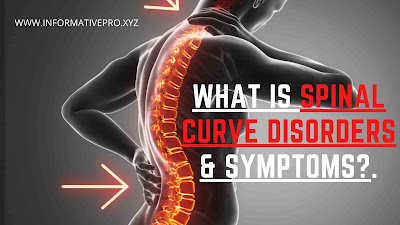
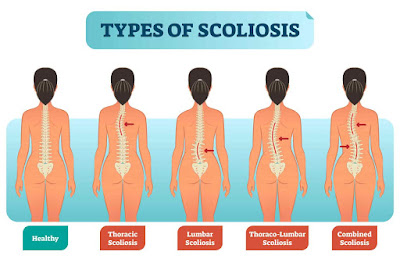
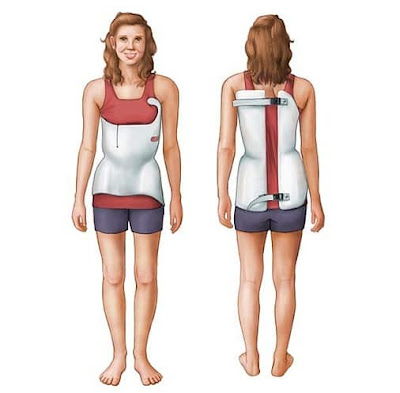
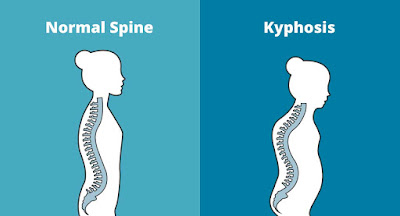
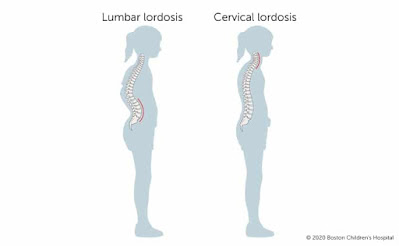
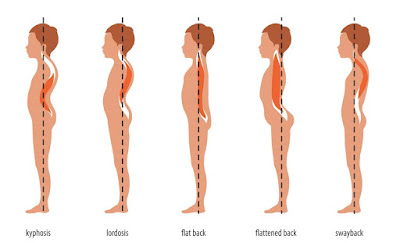
Leave a Reply